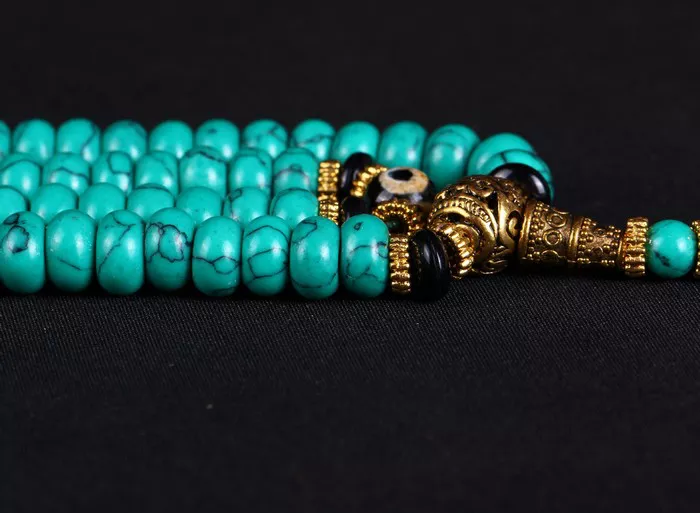Turquoise, with its stunning blue-green hues and rich cultural history, is a beloved gemstone that has been cherished for thousands of years. From ancient civilizations to modern jewelry designers, turquoise has captivated people around the world with its beauty and symbolism. If you’re curious about the value of turquoise and how much it’s worth per carat, you’ve come to the right place. In this article, we’ll explore the factors that influence the price of turquoise and provide insights into its market value.
Understanding Turquoise
Turquoise is a hydrated phosphate mineral that belongs to the class of minerals known as phosphates, arsenates, and vanadates. Its chemical formula is CuAl6(PO4)4(OH)8·4H2O, and its distinct blue-green color is due to the presence of copper ions within the crystal structure. Turquoise forms in a variety of geological settings, including sedimentary rocks, volcanic deposits, and copper-rich ore bodies.
One of the most appealing features of turquoise is its vibrant color, which ranges from sky blue to greenish-blue to robin’s egg blue, depending on factors such as the presence of trace elements, the type of host rock, and the presence of matrix or matrix material. The matrix refers to the host rock or mineral in which the turquoise is embedded, such as limonite, sandstone, or pyrite.
Turquoise has been prized for its beauty and spiritual significance for thousands of years by cultures around the world, including the ancient Egyptians, Persians, Native Americans, and Tibetans. It has been used in jewelry, amulets, and religious artifacts, and it is often associated with protection, healing, and good fortune.
Factors Affecting the Value of Turquoise
Several factors influence the value of turquoise, including the following:
Color: The color of turquoise is the most important factor in determining its value. The most prized turquoise exhibits a vivid, intense blue color with minimal matrix or veining. Stones with a pure, uniform color are more valuable than those with secondary hues or visible matrix. In general, the most valuable turquoise is a bright, sky-blue color known as “robin’s egg blue.”
Clarity: The clarity of turquoise refers to the presence of inclusions, matrix, or veining within the stone. While some inclusions are acceptable and may even enhance the stone’s character, high-quality turquoise is relatively free of visible inclusions or matrix material. Stones with excellent clarity and transparency command higher prices in the market.
Cut and Shape: Turquoise is often cut into cabochons or beads for use in jewelry, although other shapes such as rounds, ovals, and rectangles may also be available. Well-cut turquoise exhibits optimal proportions, symmetry, and polish, enhancing its beauty and overall appeal. Stones with precise cuts and smooth surfaces are more desirable and may command higher prices.
Size: As with other gemstones, the size of turquoise can significantly affect its value. Larger stones are rarer and thus more valuable than smaller ones, all other factors being equal. However, the price per carat tends to increase exponentially as the carat weight of the turquoise increases, meaning that larger stones can be significantly more expensive on a per-carat basis.
Origin: The geographic origin of turquoise can also influence its value and desirability. Certain sources are known for producing turquoise with specific colors or characteristics that are highly prized in the market. Some of the most renowned sources of turquoise include the United States (particularly Arizona, Nevada, and New Mexico), Iran, and China.
How Much Is Turquoise Worth Per Carat?
The value of turquoise can vary widely depending on factors such as color, clarity, cut, size, and origin. In general, high-quality turquoise can range in price from a few dollars per carat for lower-grade material to hundreds or even thousands of dollars per carat for top-quality stones.
For example, high-quality turquoise from well-known sources such as the Sleeping Beauty mine in Arizona or the Nishapur mine in Iran can command premium prices in the market due to their exceptional color, clarity, and scarcity. These stones may be priced at several hundred dollars per carat or more, depending on their specific characteristics and market demand.
On the other hand, lower-grade turquoise with less desirable color, clarity, or matrix content may be more affordable and accessible, with prices ranging from a few dollars per carat to tens of dollars per carat.
It’s important to note that the value of turquoise can also be influenced by market trends, supply and demand dynamics, and cultural factors. As with any gemstone, it’s essential to purchase turquoise from reputable dealers who can provide information about the stone’s characteristics, origin, and market value.
Conclusion
In conclusion, the value of turquoise varies depending on factors such as color, clarity, cut, size, and origin. While high-quality turquoise with vibrant color, excellent clarity, and minimal matrix can command premium prices in the market, lower-grade material may be more affordable and accessible. Whether you’re seeking a rare and valuable specimen for your collection or a budget-friendly option for jewelry making, turquoise offers a wide range of options to suit every taste and budget. With its timeless beauty, rich cultural history, and spiritual significance, turquoise continues to captivate and inspire people around the world.


